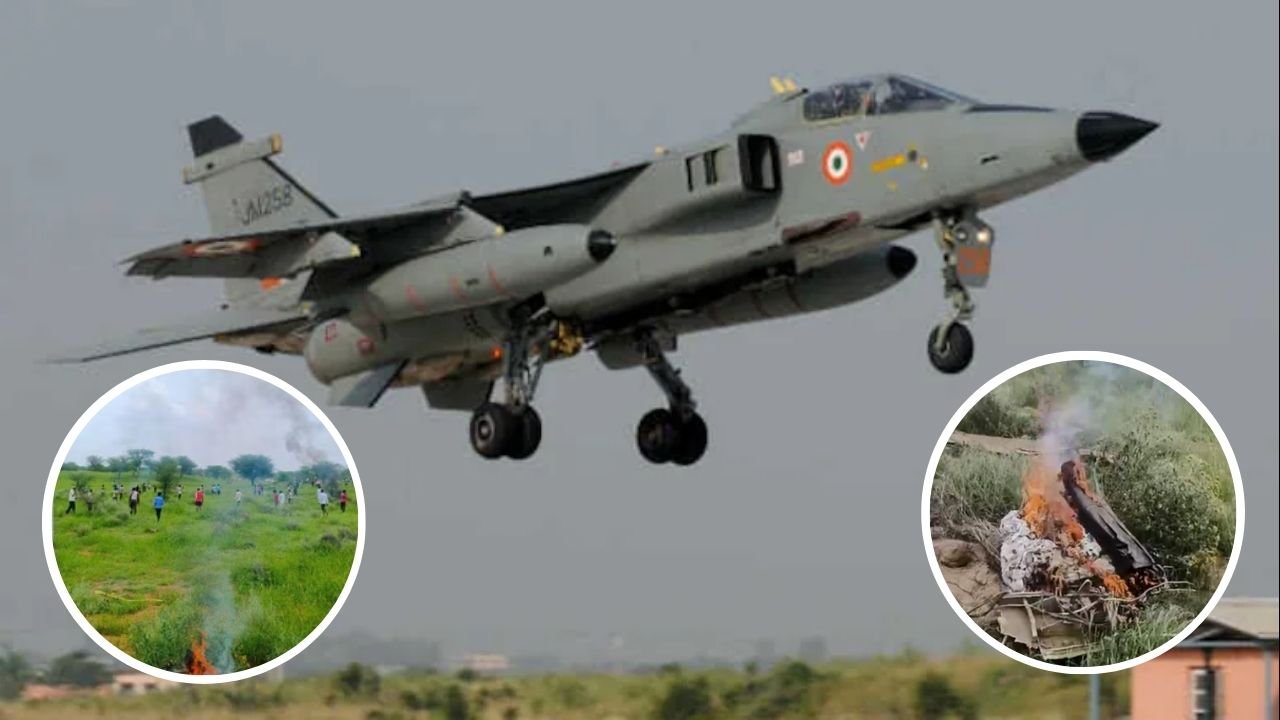Third Jaguar crash this year highlights concerns over ageing fleet and urgent need for replacements
Rajasthan, India – A Jaguar trainer aircraft of the Indian Air Force (IAF) crashed on Wednesday afternoon during a routine training mission in Rajasthan’s Churu district, killing both pilots on board.
According to officials, the twin-seater fighter jet went down in an agricultural field in Bhanoda village around 1:25 pm.
“An IAF Jaguar Trainer aircraft met with an accident during a routine training mission and crashed near Churu in Rajasthan today. Both pilots sustained fatal injuries in the accident. No damage to any civil property has been reported,” the IAF said in a statement.
The air force expressed deep condolences, adding that a court of inquiry has been ordered to ascertain the cause of the accident.
Third Jaguar Crash in 2025 Alone
Wednesday’s crash marks the third Jaguar loss for the IAF this year. On March 7, a Jaguar fighter crashed near Ambala during a training sortie. The pilot ejected safely after steering the jet away from populated areas.
Just weeks later, on April 3, a two-seater Jaguar crashed in Gujarat’s Jamnagar during a night training mission. That crash killed Flight Lieutenant Siddharth Yadav, who managed to eject his fellow pilot and guide the stricken jet away from a populated zone before succumbing to injuries himself.
These incidents underscore mounting safety concerns about the ageing Jaguar fleet.
History of Recent IAF Crashes
While Wednesday’s crash renews scrutiny on Jaguars specifically, it is part of a broader pattern of IAF training accidents in recent months:
- April 2025: Jaguar crash in Jamnagar, Gujarat (1 pilot killed).
- March 2025: Jaguar crash in Ambala, Haryana (pilot ejected safely).
- February 2025: A twin-seater Mirage 2000 crashed near Shivpuri, Madhya Pradesh. Both pilots ejected safely.
- November 2024: MiG-29 crash near Agra, Uttar Pradesh. The pilot ejected safely.
Ageing Jaguar Fleet Under Spotlight
The SEPECAT Jaguar, a twin-engine ground attack aircraft, was inducted into the IAF in 1979. Once operated by countries including Britain, France, Oman, Ecuador, and Nigeria, the Jaguar has long been retired elsewhere.
The IAF remains its last military operator, flying largely licence-built variants manufactured by HAL under a 1980s-era technology transfer.
While India has planned to begin ‘number-plating’ or phasing out older Jaguars after 2027–28, delays in acquiring newer jets like the Tejas Mk2, Rafale, and the MRFA program have forced the air force to keep these ageing planes flying longer.
The IAF’s fighter strength is also stretched, with just 30 operational squadrons against the sanctioned 42.5, making replacements urgent.
Engine Failures and Safety Concerns
Many inquiries into past Jaguar crashes have pointed to engine failures and technical malfunctions. Experts argue that these aircraft are well beyond their expected operational life, raising the risk of fatal accidents even during routine training.
Wednesday’s crash adds tragic weight to calls for speeding up the induction of modern fighter aircraft to replace India’s ageing fleet and safeguard the lives of its pilots.
The IAF’s Statement:
“IAF deeply regrets the loss of lives and stands firmly with the bereaved families in this time of grief. A Court of Inquiry has been constituted to ascertain the cause of the accident.”
